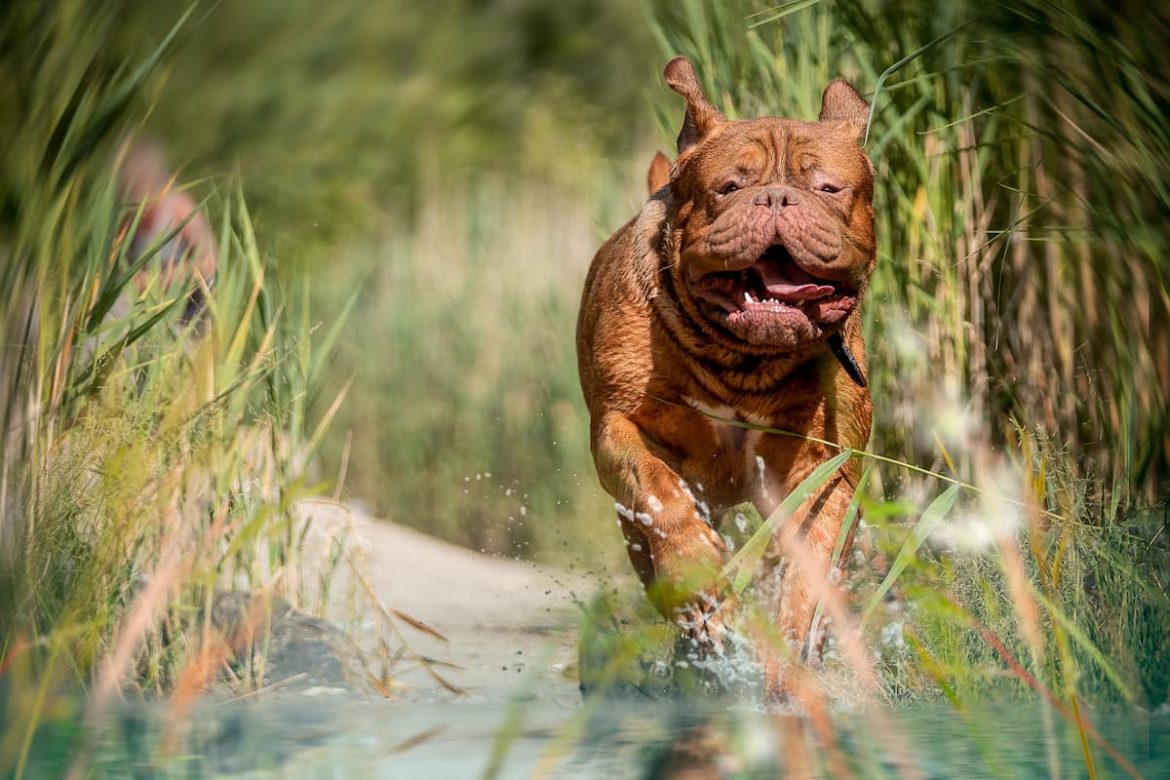Have you noticed your dog slowing down on walks, or less enthusiastic to even go on one? Maybe you’ve seen an increase in them licking their joints, or hesitant when you attempt to pat or cuddle them?
Although there could be numerous reasons for these actions, these could be signs of arthritis or joint pain.
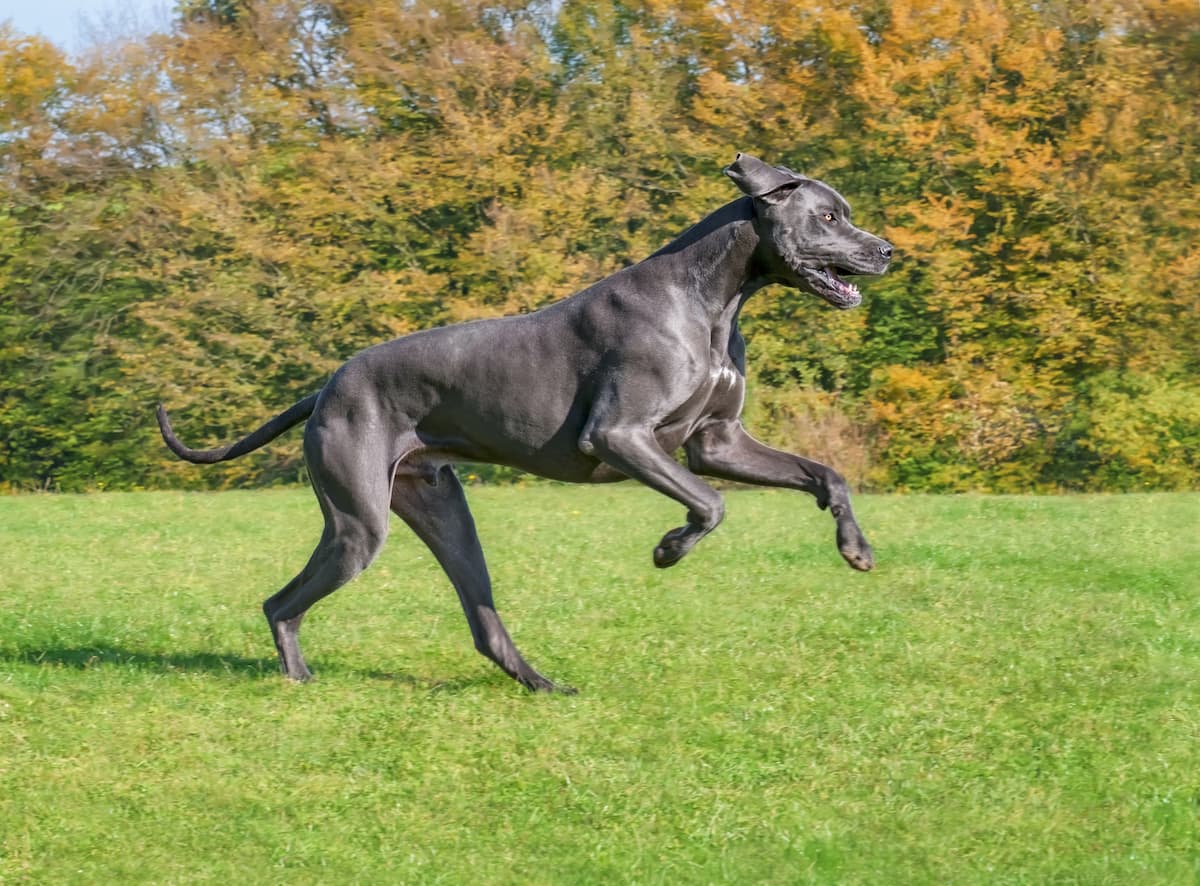 What causes joint pain & arthritis in dogs?
What causes joint pain & arthritis in dogs?
There are many factors that contribute to the development of joint pain. Age is certainly one of them. Like humans, cartilage starts to deteriorate as dogs get older. This is particularly true for larger dog breeds that develop joint issues from years of wear and tear, and dogs carrying excess weight.
Injuries and overexertion can also contribute to joint damage in dogs. Intense exercise or repetitive activities – cue the dog jumping on and off the couch – can cause great strain on their body and therefore fast-track any potential wear and tear.
As well as other factors such as diet, or developmental abnormalities such as hip dysplasia or elbow dysplasia, genetics is very much a leading contributor to joint issues and arthritis in dogs.
Certain breeds have a predisposition to joint pain which increases their likelihood of developing arthritis in their later years.
Dog breeds that are susceptible to joint pain and arthritis
It’s not uncommon for larger dog breeds to be prone to joint damage, however smaller breeds are not immune!
Let’s take a look at some of the breeds that are more prone to arthritis:
- Labrador Retriever: Labradors are genetically predisposed to hip dysplasia and elbow dysplasia, leading to abnormal wear and tear on the joint surfaces over time.
- Golden Retriever: Like Labs, Golden Retrievers are susceptible to hip dysplasia and elbow dysplasia. Their large size and active lifestyle can exacerbate these conditions.
- German Shepherd: German Shepherds are prone to hip dysplasia due to their breeding history and genetics. Poor hip conformation can cause the hip joint to deteriorate, leading to pain and reduced mobility.
- Saint Bernard: Saint Bernards are large and heavy dogs, putting extra strain on their joints. This strain can lead to hip dysplasia and arthritis, particularly as they age.
- Rottweiler: Rottweilers are prone to hip dysplasia and elbow dysplasia, which can be exacerbated by their muscular build and high activity levels.
- Great Dane: Because Great Danes grow rapidly during puppyhood, this puts stress on their developing joints. This rapid growth can contribute to hip dysplasia and osteoarthritis later in life.
- Bulldog: Bulldogs have a body structure that puts strain on their joints, particularly the hips and knees. Their short, stocky build can contribute to hip dysplasia and arthritis.
- Mastiff: Mastiffs are giant breeds with heavy bodies, making them susceptible to hip dysplasia and arthritis. Their size puts extra stress on their joints, leading to joint issues over time.
- Dachshund: A Dachshund’s long body and short legs means they encounter spinal issues such as intervertebral disc disease (IVDD). IVDD occurs when the discs between the vertebrae degenerate or herniate, causing pressure on the spinal cord and nerves.
- Basset Hound: Similar to Dachshunds, Basset Hounds have a long body and short legs, which can contribute to spinal issues like IVDD. Their low-slung stature puts extra strain on their backs and joints.
If you see any signs of discomfort, this may mean your fur friend is suffering from poor joint health. Conversely, even if your dog isn’t showing signs of joint pain, it doesn’t mean they’re not suffering from early symptoms. Getting on the front foot with preventative measures may help them in the long run.
How to help prevent or manage arthritis in dogs
Reducing the onset of – or helping to manage – arthritis in dogs can be achieved in a few ways.
Nutrition
Nutrition plays a big part in your dog’s overall health & wellbeing. As they say, you are what you eat! So a diet that’s nutritionally balanced will help support strong bones and healthy immune and muscle repair systems. Feed your four-legged friend high quality dog food – look for those with essential nutrients like omega-3 fatty acids, glucosamine, and chondroitin sulphate. A healthy diet will also help to manage their weight.

Exercise
Exercise is vital for dogs, no matter their age or breed. What’s most important here, though, is controlled exercise that’s appropriate for their physique. Avoid any physical activity that would put excessive strain on their joints. Particularly for smaller breeds with short legs, implementing a ramp or steps up to your couch or bed can help reduce the impact on their joints.
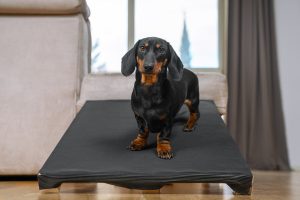
Joint Supplements
Many veterinarians also recommend joint supplements for dogs, to help provide them with the essential building blocks for cartilage repair and maintenance.
Find a joint supplement that’s safe for long-term use. This will give you the peace of mind that it’s formulated with natural goodness, for joint health and overall wellness.

Antinol®️ Plus is a well-known brand and highly trusted and recommended by Vets around the world. In fact, it’s the most independently and clinically proven pet joint supplement in the world.
Here’s why:
- Antinol® Plus is a super potent anti-inflammatory blend of two marine lipid concentrates chosen for their unique nutrient synergy – green lipped mussel oil (125x more potent than green lipped mussel powder), and high phospholipid krill oil.
- Antinol®️ Plus is made with 100% natural, patented and stabilised oil. It’s free from mercury, cadmium and other heavy metals. Clear from toxins, and has no synthetic preservatives or fillers.
- Antinol®️ Plus is clinically proven to work! Studies have shown that Antinol®️ enhances mobility in 90% of dogs, within 2 weeks.
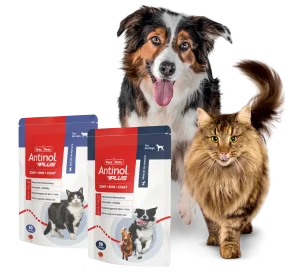
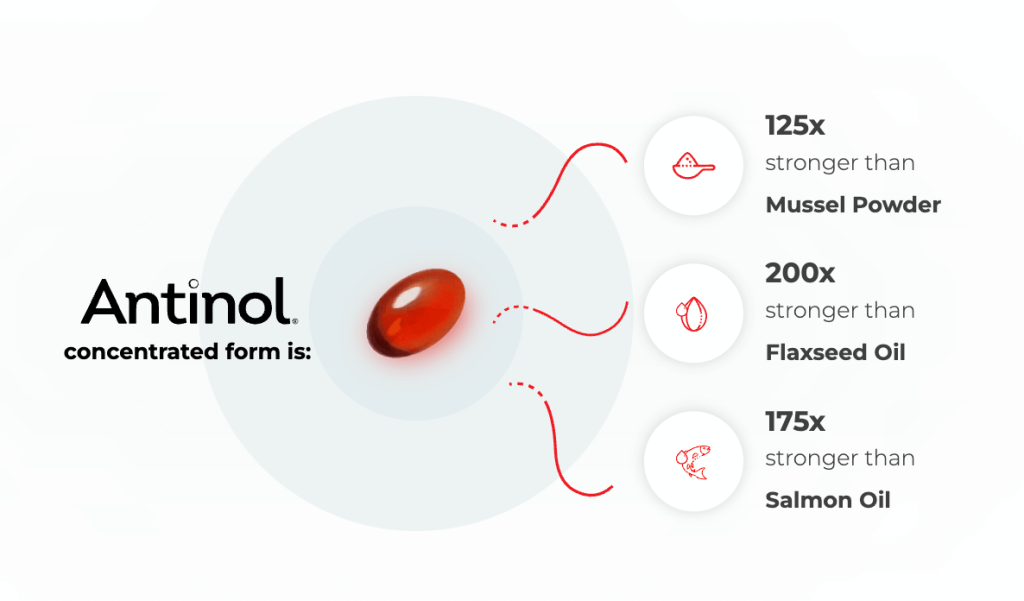
What you’ll notice is a more mobile and comfortable fur friend, ready to take on the world. So whether it’s to help manage existing joint discomfort or arthritis in dogs, or to help prevent it, Antinol® Plus joint supplements for dogs will keep their happiness in motion.

